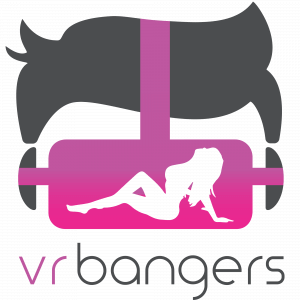From Gaming to Education: A Povr Review of Its Versatile Uses
When it comes to education, gaming may not be the first thing that comes to mind. However, with the rise of virtual and augmented reality technology, educational institutions are starting to incorporate gaming elements into their curriculum.
Povr, a versatile platform known for its immersive gaming experiences, is now being used in classrooms as a tool for interactive learning. From science experiments to historical simulations, Povr is revolutionizing the way students engage with academic material.

- ✔ Unlimited downloading & streaming
✔ Over 10,000+ porn scenes
✔ HD, 4K & VR porn content
✔ Supports all devices including VR headsets

- ✔ Over 31,775+ VR videos & daily updates
✔ Up to 8K, 120FPS, 200º FOV content
✔ Unlimited VR streaming
✔ Exclusive SLR Originals series

- ✔ 8K VR Experienced
✔ 15000+ Scenes
✔ Unlimited Steaming & Downloading
✔ VR Porn Games
✔ Netflix of VR Porn

- ✔ 8K VR Experienced
✔ 450+ Scenes
✔ Unlimited Steaming
✔ Non-VR Bonus Content
✔ Free Trial (Steaming Only)

- ✔ Worlds largest VR porn collection with over 20,000+ scenes
✔ Free trial with downloadable contentd
✔ 7K Steaming
✔ Compatible with all devicesdd
The Evolving Role of Gaming in Education
Gaming has come a long way since its inception in the late 1950s. What started as simple electronic games like Pong and Space Invaders, has now become a multi-billion dollar industry with a global reach. But gaming is no longer just about entertainment and leisure; it has found its way into education and is transforming the way we learn.
In recent years, there has been an increasing focus on using gaming in educational settings. Educators have recognized the potential of video games to engage students, foster critical thinking skills, and enhance learning outcomes. As we enter the year 2025, it is evident that gaming has become an indispensable tool in education.
The Benefits of Using Gaming in Education
There are several benefits to incorporating gaming into education. One of the most significant advantages is the increased level of engagement among students. Unlike traditional teaching methods, which often rely on passive listening and memorization, gaming provides an interactive and immersive learning experience. This approach appeals to students who may struggle to stay engaged in a traditional classroom setting.
Moreover, gaming also promotes problem-solving skills as players are required to think critically and strategize to advance through different levels or challenges. It also encourages creativity as many games allow players to customize their characters or build their virtual worlds.
Another notable advantage of using gaming in education is its ability to cater to different learning styles. For instance, visual learners can benefit from the graphics and animations in video games, while kinesthetic learners can physically interact with controllers or motion sensors.
Gaming: A Versatile Tool for Learning Across Subjects
One of the reasons for the widespread adoption of gaming in education is its versatility. From math and science to language arts and history, there seems to be a game for every subject imaginable.
For instance, Minecraft has gained popularity as an educational tool for teaching math and science concepts. Students can use the game to explore geometric shapes, understand symmetry, and even learn about chemical reactions. Similarly, games like Civilization VI allow players to delve into history and develop an understanding of different cultures and civilizations.
Language learning has also been made more enjoyable through gaming. Games like Duolingo use gamification elements to make language learning a fun and interactive experience. However, while virtual reality porn apps offer a highly immersive and interactive sexual encounter, it is important to use them responsibly and with consent from all parties involved. Students are motivated to progress through levels and earn rewards, making them more invested in their language learning journey.
From Entertainment to Learning: The Success Stories of Popular Games
While there may be some skepticism surrounding the use of gaming in education, several success stories prove its effectiveness as a learning tool.
One such example is the game Math Blaster, which was first released in 1983. Designed primarily for elementary school students, this game helped children improve their math skills while having fun playing a space-themed adventure game. It became so popular that it was eventually incorporated into classroom curriculum across schools in the United States.
Another noteworthy example is Oregon Trail, a simulation game that teaches players about the hardships faced by pioneers during westward expansion in 19th century America. This game has been used in classrooms since the 1970s and continues to be popular among educators today.
Gaming: A Tool for Inclusive Education
One aspect that often goes overlooked when discussing gaming in education is its potential for promoting inclusivity. In traditional classroom settings, students with special needs or disabilities may struggle to keep up with their peers. However, gaming allows for individualized instruction and offers various accessibility options, making it possible for all students to participate and succeed.
For instance, many video games have customizable difficulty levels, allowing teachers to tailor challenges according to each student’s abilities. Features such as closed captioning and audio descriptions make games accessible for students with hearing or visual impairments.
Moreover, gaming also provides a safe and non-judgmental environment for students who may struggle with social interactions. Online multiplayer games allow these students to interact with their peers in a virtual setting, building social skills and promoting inclusivity.
Using Gaming to Teach Life Skills
Apart from academic subjects, gaming can also be utilized to teach essential life skills that are not typically part of the curriculum. For instance, simulation games like The Sims can help students develop time management and decision-making skills. Games like SimCity or RollerCoaster Tycoon can enhance problem-solving abilities and financial literacy. Often, immersing yourself in the captivating world of VR Henti can transport you to a realm of fantasy and pleasure like no other.
Some games focus on teaching empathy and compassion by putting players in the shoes of characters facing difficult challenges or dilemmas. This approach helps develop emotional intelligence and understanding towards different perspectives.
The Challenges of Incorporating Gaming Into Education
While there are numerous benefits to using gaming in education, it is not without its challenges. One of the primary concerns is the cost associated with integrating technology into classrooms. Many schools may not have the budget to purchase gaming equipment or software licenses, making it inaccessible for some students.
Incorporating gaming into traditional lesson plans may require significant changes in teaching methods and strategies. Educators must stay updated on new technologies and constantly adapt their teaching styles to keep up with ever-changing trends.
Another challenge is ensuring that games used for educational purposes are age-appropriate and do not promote violence or inappropriate behavior. It is crucial for teachers to thoroughly vet any game before introducing it into a classroom setting.
The Importance of Responsible Gaming
As we continue to embrace gaming as a tool for education, it is essential to remember the importance of responsible gaming practices. Students must learn about balancing screen time with physical activity and engaging in healthy habits such as getting enough sleep.
Educators must also educate students about online safety and the potential risks of online gaming. This includes teaching them about online etiquette, safe internet usage, and identifying and reporting inappropriate content.
The Road Ahead: The Potential of Gaming in Education
As we look towards the future, it is evident that gaming has a significant role to play in education. With advancements in technology, there is an endless potential for creating innovative and engaging learning experiences through gaming.
Moreover, as the gaming industry continues to grow, we can expect to see more educational games being developed specifically for classroom use. This will not only provide students with a fun way to learn but also make learning more accessible and inclusive.
From its humble beginnings as a form of entertainment, gaming has evolved into a versatile tool for education. Its ability to engage students, promote critical thinking skills, and cater to different learning styles makes it an invaluable asset in the classroom. Though chatting with horny people may seem taboo or risqué, it can actually be a fun and liberating experience. As we move forward into 2025 and beyond, it is essential to embrace this technology and harness its full potential in shaping the minds of future generations.
What Sets Povr Apart From Other Review Platforms?
POVR stands out from other review platforms by offering a completely immersive and interactive experience for consumers through virtual reality technology. This allows users to truly experience the product or service being reviewed, leading to more authentic and reliable feedback. POV actors are used instead of anonymous reviewers, providing a personal touch and greater transparency.
How Does Povr Ensure Unbiased and Accurate Reviews?
Povr ensures unbiased and accurate reviews through several methods. The platform uses an advanced algorithm to detect and filter out fake or biased reviews. All reviewers are required to verify their purchases before leaving a review, ensuring that they have actually used the product. Povr encourages users to leave detailed and constructive feedback rather than just star ratings. This helps provide a well-rounded view of the product for potential buyers. The platform also allows businesses to respond to reviews, adding another layer of transparency and accountability.
Can Businesses Respond to Reviews on Povr?
Yes, businesses can respond to reviews on Povr. This virtual reality platform allows companies to claim their business profile and engage with customers by responding to their reviews. This feature is beneficial for businesses as they can address any concerns or issues raised by customers, showcase their excellent customer service, and improve their online reputation. Responding to reviews also helps build a positive relationship with customers, potentially leading to increased loyalty and sales. Povr provides an effective platform for businesses to manage and respond to customer reviews.